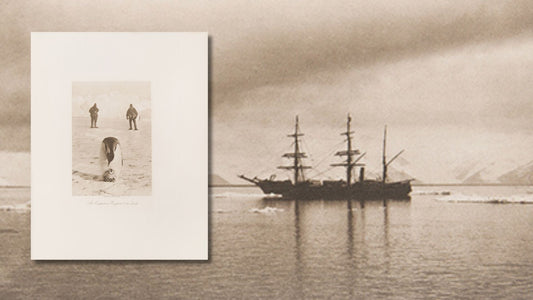Ukrainian Modernism

The Royal Academy's new exhibition, In the Eye of the Storm: Modernism in Ukraine 1900-1930s, is the most comprehensive exhibition to date in the UK, celebrating a period of bold artistic experimentation. Despite profound upheaval, there was a true flourishing...

The Royal Academy's new exhibition, In the Eye of the Storm: Modernism in Ukraine 1900-1930s, is the most comprehensive exhibition to date in the UK, celebrating a period of bold artistic experimentation. Despite profound upheaval, there was a true flourishing of art, literature, and theatre that left an indelible mark on the country’s culture.
The first room brings together the work of Sonia Delaunay, David Burliuk, and Alexandra Exter. Influenced by Cubo-Futurism, their paintings reflect the radical trends they encountered whilst travelling in Europe but are also grounded in the vivid colours of Ukrainian folk art.

David BURLIUK; Alexandra EXTER; Benedikt LIVSHITS. Vol'che solntse. Kniga stikhov vtoraia [Wolves' Sun: Second Book of Verse]. 1914.
Burliuk and Exter (Inscribed by Burliuk). Published by the futurist group Gilea, named after Hylaea, a part of Scythia beyond the mouth of the Dnipro River. It’s here, in the Taurida province of Russia, that the Burliuk brothers spent their childhood and youth.

Sonia DELAUNAY; Tristan TZARA. Juste Présent. 1961.
Sonia Delaunay was born to a poor Jewish family in Odesa and went on to become the first living female artist to have a retrospective exhibition at the Louvre in 1964. Her art and her design for furniture, fabrics, wall coverings, and clothing put her at the forefront of 20th-century artists.
Many artists were compelled to move to cities such as St Petersburg, Munich, or Paris to complete their studies, but in 1918 Alexandra Exter opened her own private studio with a separate course on stage design, and the avant-garde scene flourished.

Yakov TUGENDKHOL'D. Alexandra Ekster, kak zhivopisets i khudozhnik stseny [Alexandra Exter as an Artist and a Theatre Designer]. 1922.
One of Exter’s students was Issachar Ber Ryback, an active participant of the Kultur Lige, who in 1915, together with El Lissitzky, went on ethnographic expeditions around the Jewish towns in central Ukraine. He used the radical art trends he’d picked up in Kyiv to depict the culture and daily life of Jewish people.

Issachar Ber RYBACK. Shtetl. My Destroyed Home - A Recollection. 1923.

Issachar Ber RYBACK. On the Jewish Fields of the Ukraina. 1926.
It is impossible to talk about this period of Ukrainian art without mentioning Heorhiy Narbut. He is credited with popularising the trident symbol we’re so familiar with today as he designed the coat of arms, banknotes, and stamps for the short-lived Ukrainian People’s Republic in 1917. He also designed this incredibly rare art journal published in Kyiv in 1920, edited by Mykhailo Semenko.

Heorhiy NARBUT (illustrator); Mikhailo Semenko (editor). Mystetstvo u Kyivi [Art in Kyiv]. 1920.
Following in the steps of Narbut’s trailblazing book design was Pavlo Kovzhun. The British Library concluded: 'In the history of Ukrainian modern art, it is difficult to find a figure with equal enthusiasm and devotion to his art as Pavlo Kovzhun'.

Mykhailo RUDNYTSKY; Pavlo KOVZHUN (illustrator). Ochi ta Usta [Eyes and Mouth]. 1920.
This is one of only 100 copies, each with a unique binding.
Inspired by the Kultur Lige a decade before them, artists in Kyiv began illustrating children’s books for the publisher Kultura in an avant-garde style.

Natalia DIRSH; Konstantin KOZLOVSKY (illustrator). Tsukor [Sugar]. 1930.

Maria Petrovna KLOKOVA-LAPINA; Borys ERMOLENKO (illustrator). U haiu [In the Grove]. 1928.
Tsukor illustrated by Kozlovsky and U haiu by Ermolenko are two examples from the brief period when the publisher was allowed to produce books in the Ukrainian language.




